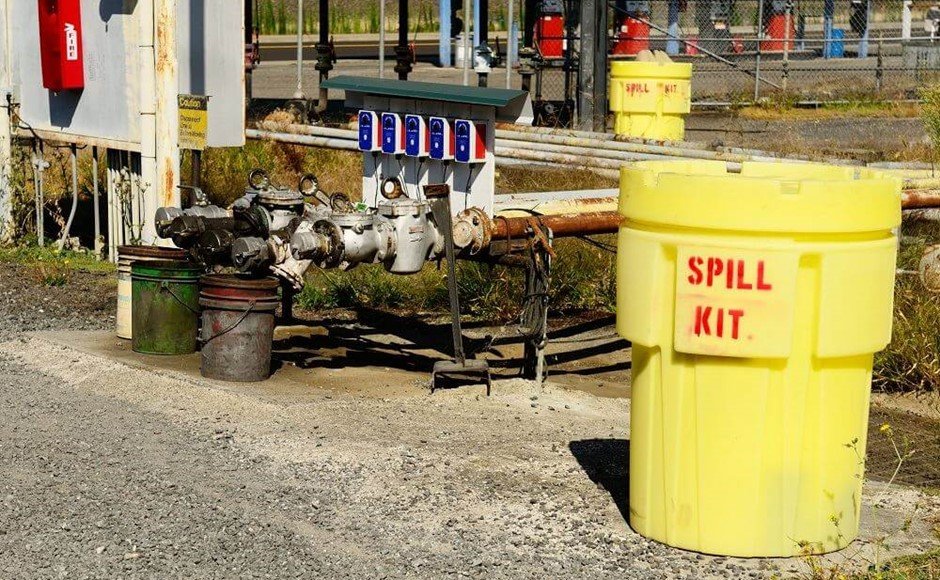Indoor air quality problems are generally classified as “sick building syndrome” (SBS) or “building-related illness” (BRI). Conditions associated with sick building syndrome are not easily traced to a specific substance but are usually believed to result from some unidentified contaminant or combination of contaminants.
When most people think of occupational safety and health needs, they picture the dangers lurking around construction sites or in factories. However, office workers have discovered over the years that they also face many unique challenges to their safety and health. Historically, the office has been considered a relatively safe and healthy place to work. Increasingly, however, office workers have expressed concerns about the office environment and their working conditions. These concerns are also reflected in complaints of discomfort, anxiety, irritation, and general job dissatisfaction and can be measured in terms of sick leave, absenteeism, and job turnover.
Concern over air quality in offices has generated various health-related symptoms that are known collectively as the “sick building syndrome ( SBS).” Indoor air pollution and inadequate ventilation are presently subjects of intense study. by reading the article below you will be familiar with:
- Indoor Air Pollution
- The symptoms associated with Sick Building Syndrome ( SBS )
- Sources of Indoor Air Pollution
- Control Strategies
Also Read: E-Books: Introduction to Environmental Management

Indoor Air Pollution
Our awareness of indoor air quality has increased in recent years. Energy conservation programs spawned by world oil shortages resulted in changes to building design and operation. Buildings have been sealed and ventilation rates reduced in an effort to prevent the infiltration of untempered outside air (hot, humid air in the summer and cold, dry air in the winter). These changes were made to reduce operating costs but have had a negative impact on indoor air quality.
Indoor air quality problems are generally classified as “sick building syndrome” (SBS) or “building-related illness” (BRI). Conditions associated with sick building syndrome are not easily traced to a specific substance but are usually believed to result from some unidentified contaminant or combination of contaminants.
The symptoms associated with SBS
The symptoms associated with SBS include:
- cough
- dizziness
- dry mucous membranes
- dry skin
- erythema (skin reddening)
- eye irritation
- headache
- hoarseness
- irritation of the throat
- mental fatigue
- nausea
- nose irritation
- respiratory infections
- wheezing
Also Read: Musculoskeletal Disorders Risk Factors
The symptoms of sick building syndrome are relieved when the employee leaves the building and may be reduced or eliminated by modifying the ventilation system.
“Building-related illness” (BRI) describes specific medical conditions that have a known origin. These illnesses can be severe and, unlike SBS, can often be traced to a single contaminant source such as mold infestation or microbial growth in cooling towers, air handling systems, and water-damaged furnishings. Unlike SBS, symptoms may not disappear when the employee leaves the building. Building-related illnesses include:
- respiratory allergies
- nosocomial (hospital) infections
- humidifier fever
- hypersensitivity pneumonitis
- Legionnaires’ disease
Signs and symptoms of BRI are characteristic of exposure to chemical and biological substances including:
- carbon monoxide
- formaldehyde
- pesticides
- endotoxins
Also Read : E-Books: COVID-19 Information and Risk Assessment
Sources of Indoor Air Pollution
Indoor air quality is affected by pollution from inside and outside of buildings and by poor ventilation. Human metabolic activity, smoking, structural components of the building, building contents, biological contamination, office and mechanical equipment, and outside air pollutants that enter the building—all are sources of indoor air pollution.
Inside Air Contaminants
Indoor sources of air pollutants due to chemicals can be attributed to building materials and products used in the building. Formaldehyde vapors can be emitted from urea-formaldehyde foam insulation, particle board, plywood, and some glues and adhesives commonly used during construction. Other contaminants include fibrous glass, various organic sol- vents from glues and adhesives, and acetic acid used as a curing agent in silicone caulking.
Chemicals and emissions from copying machines also contribute to indoor air pollution. These include, for example, methyl alcohol from spirit duplicators, butyl methacrylate from signature machines, ammonia and acetic acid from blueprint copiers, and ozone from photocopiers. Other inside contaminants include:
- improperly applied pesticides
- boiler additives such as N,N-diethylethanolamine
- improperly diluted cleaning agents such as rug shampoo
- tobacco smoke of all types (also commonly referred to as environmental tobacco smoke, ETS)
- combustion gases from sources common to cafeterias and laboratories
- cross-contamination from poorly ventilated sources that leak into other air zones
Indoor air problems due to biological pollutants often involve some type of microbiological contamination. Three conditions are necessary for microbial contamination to occur: high humidity (over 60 percent), appropriate temperatures, and suitable growth media. Such contamination can result from water damage to carpets or furnishings or from standing water in ventilation system components. A respiratory problem known as hypersensitivity pneumonitis can result from bacteria, fungi, protozoa, and microbiological products that may originate in ventilation system components.
Outside Air Contaminants
Pollutants from outside the building or office space can also contribute heavily to indoor air problems. Examples of these contaminants are motor vehicle exhaust, boiler gases, and previously exhausted air. Major sources are improperly located exhaust and intake vents and periodic changes in wind conditions.
One of the most common contaminants from outside is carbon monoxide gas from basement parking garages, recirculated through the building ventilation system. Other outside contaminants include the by-products of construction or renovation, such as asphalt, solvents and dust. Gasoline vapors can infiltrate the basement and sewage system and are usually caused by gasoline leaks from ruptured underground tanks at nearby service stations.
Inadequate Ventilation
Inadequate ventilation is a key factor associated with poor indoor air quality. Ventilation problems commonly encountered include:
- insufficient outdoor air supplied to the office space
- poor air distribution and mixing, which causes stratification, draftiness, and pressure differences between office spaces
- extremes of fluctuations in temperature and humidity (sometimes caused by poor air distribution)
- air filtration problems caused by improper or inadequate maintenance of the building ventilation system
In many cases, these ventilation problems have been created or exacerbated by energy conservation measures. Such measures include reducing or eliminating outdoor air; reducing infiltration and exfiltration; lowering thermostats in winter and raising them in summer; eliminating humidification or dehumidification systems, and early shutdown and late start-up of ventilation systems.
Also Read: Introduction to industrial ventilation
Control Strategies
Four control strategies can be implemented to reduce indoor air pollution: education and training; dilution ventilation; modifying processes and equipment; and air cleaning.
Education and Training
The employer should provide all office employees with timely information on the health and physical hazards associated with office products and materials. Employers are required by the OSHA Hazard Communication Standard, 29 CFR 1910.1200, to develop and implement a hazard communication program where any hazardous chemicals are known to be present and to which employees may be exposed. The required hazard communication program details information and training that employees must receive.
Dilution Ventilation
Ventilation systems are designed to supply sufficient oxygen for normal respiration, dilute contaminants in occupied spaces, remove contaminants emitted from work areas, and control odors. The American Society of Heating, Refrigeration, and Air Conditioning Engineers (ASHRAE) is a private standard-setting organization that has developed specific ventilation standards that are often incorporated into building codes. Most ventilation systems meet the design standards set by state and local building codes.
The primary method of controlling air contaminants in most buildings is general ventilation. General dilution ventilation requires a clean air supply to dilute all the contaminants of concern and exhaust openings located near the contaminant source or work area.
Recirculation of exhausts can be avoided by locating the intake and outlet remotely. Reentry of exhaust air can be avoided by discharging exhaust above the roof away from openings and air intakes.
Modifying Processes and Equipment
Pollution emission rates may be reduced by modifying processes and equipment. Polluting substances that are part of the work process may simply be eliminated. Less toxic materials may be available to substitute for contaminating substances. Or the quantity of contaminating substances may be reduced.
Equipment may be subject to the modification that would reduce contamination. Using equipment differently or installing barriers may also reduce emissions at their source.
Air Cleaning
This control strategy involves removing air contaminants before the air is recirculated. Filters and electronic air cleaners are common particle removal devices. Adsorption and absorption are removal techniques for pollutant gases. Air conditioning is primarily a comfort device, but some concentrations of pollen and other particulate matter are slightly reduced by air conditioning.
Also Read: .9 Tips to Prevent Carpal Tunnel Syndrome
Please visit our Safety Resources SAFETY BAG to have many Safety Resources





